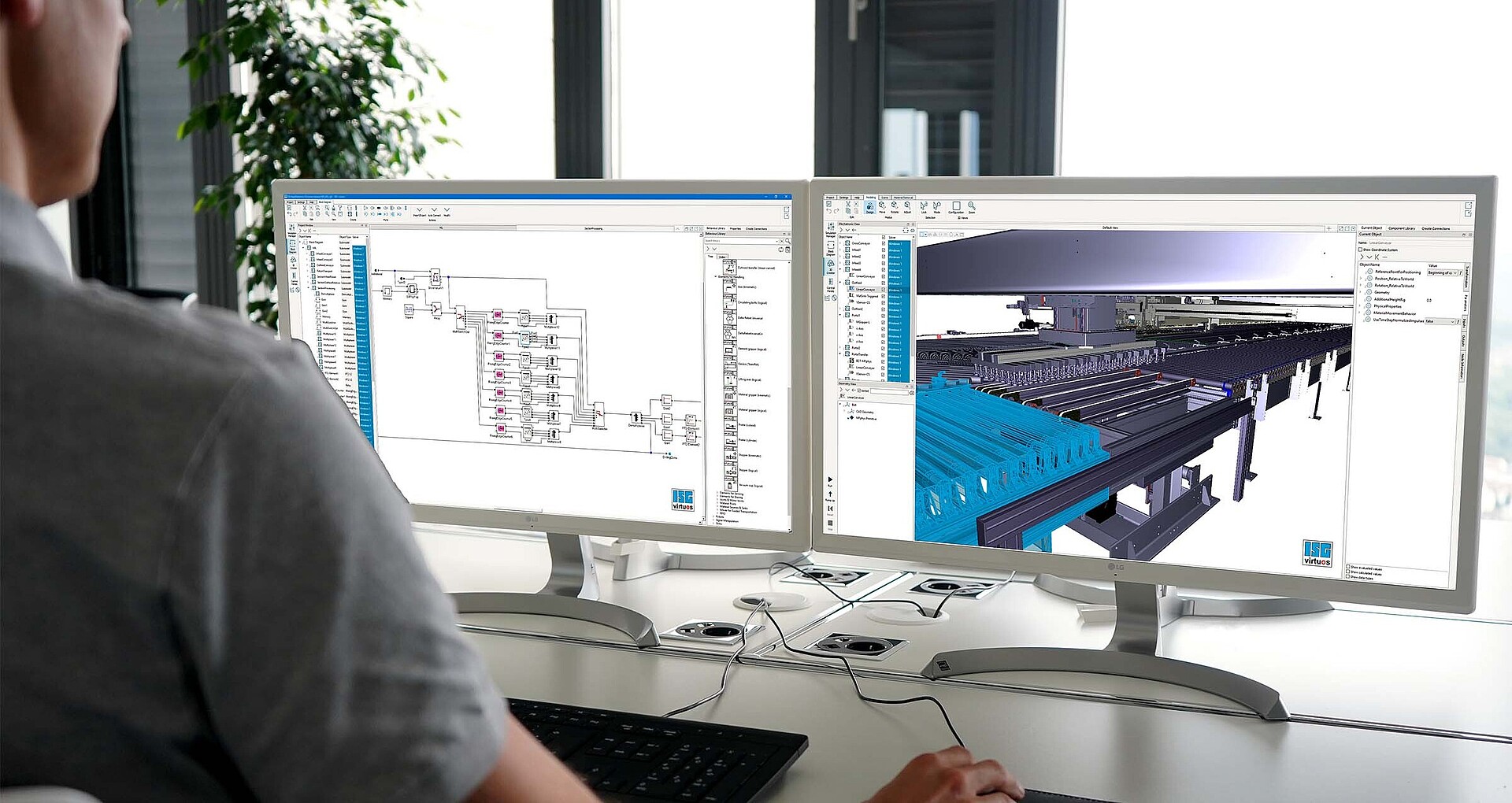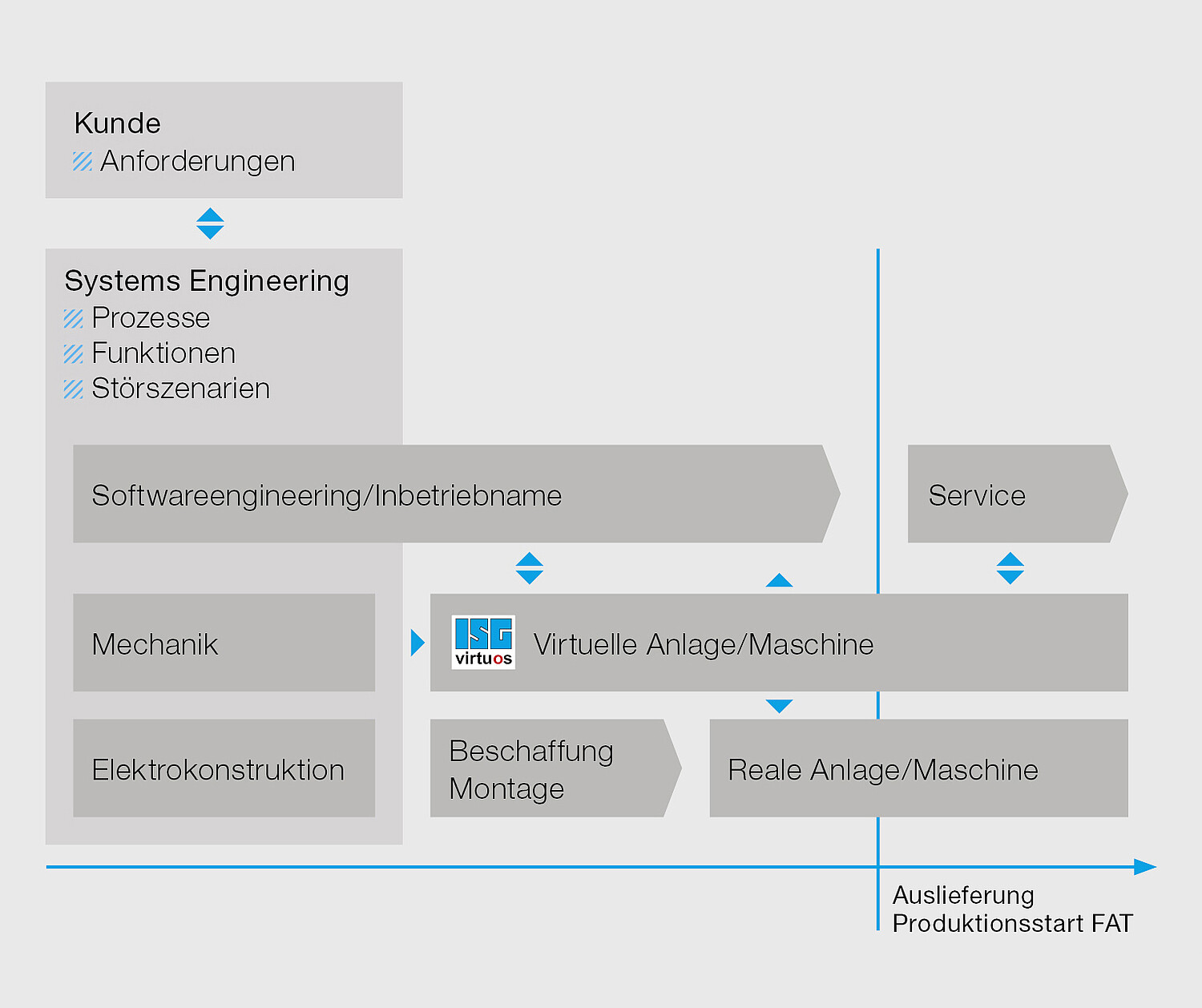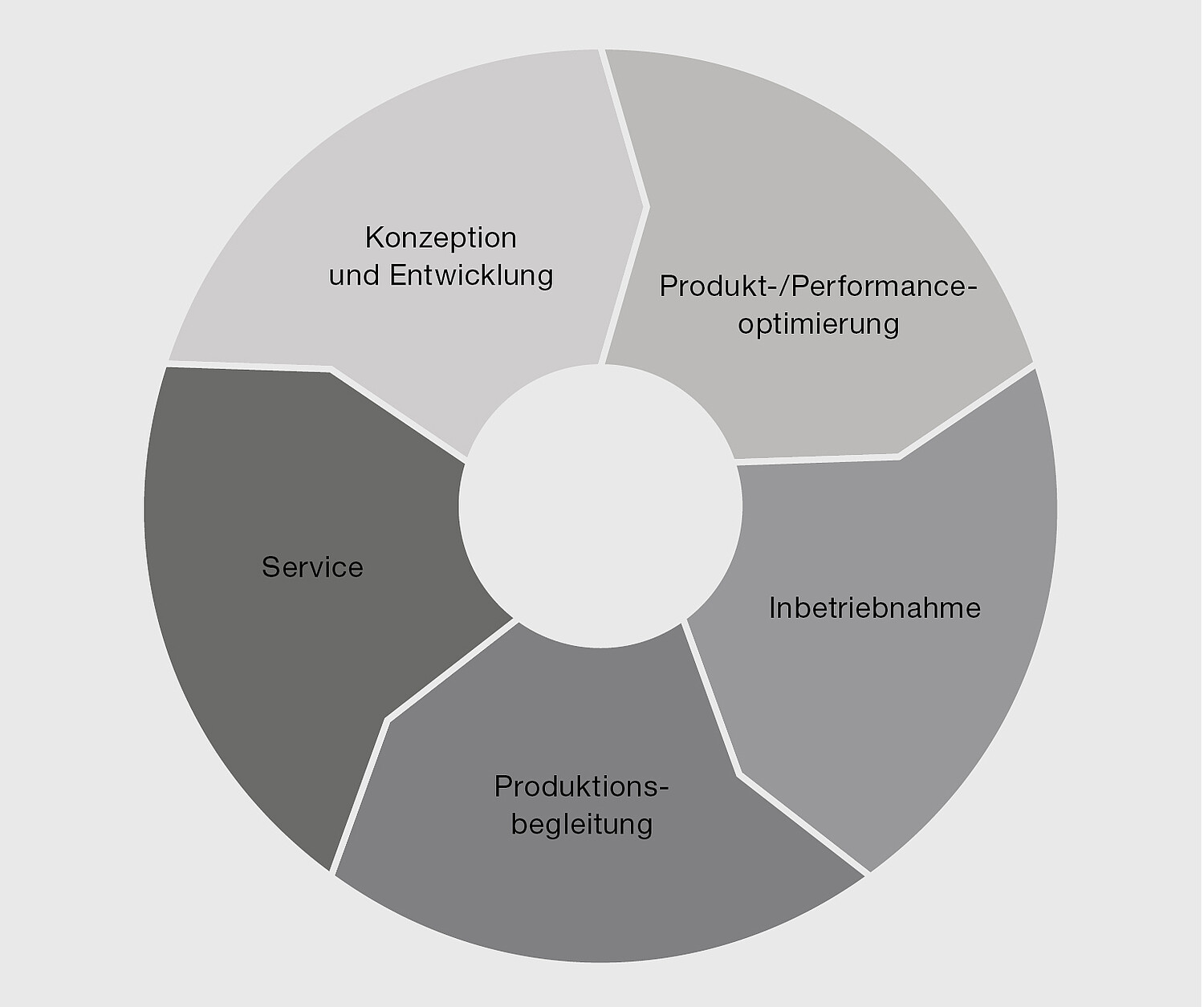Flexible and cost-optimized engineering processes
Beyond the one-time use of digital twins for virtual commissioning, plant and machine builders as well as production companies in various industries increasingly rely on so-called "simulation-based engineering".
This consistent, profitable use of ISG-virtuos as a "dynamic specification" leads to significantly higher software quality with the same manpower in a shorter time, and the automation of machines and plants starts at a very early stage. The connection of systems to higher-level control systems can also be significantly shortened by preceding virtual connection. Risks in project management and during commissioning at the customer's site are significantly reduced, especially through virtual acceptance.
In the case of manufacturers who use different control systems, the verified functionality of the control system mainly used can be transferred to controls from other manufacturers and fully tested, even if the real system is not available. Mechatronic solutions form the basis for this: The respective components are modeled, verified and accepted in mechanics (including 3D representation) and in behavior (electrics, pneumatics, hydraulics, etc.) and then stored in module libraries of the simulation system for reuse.


